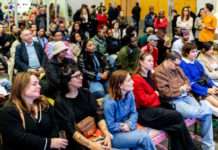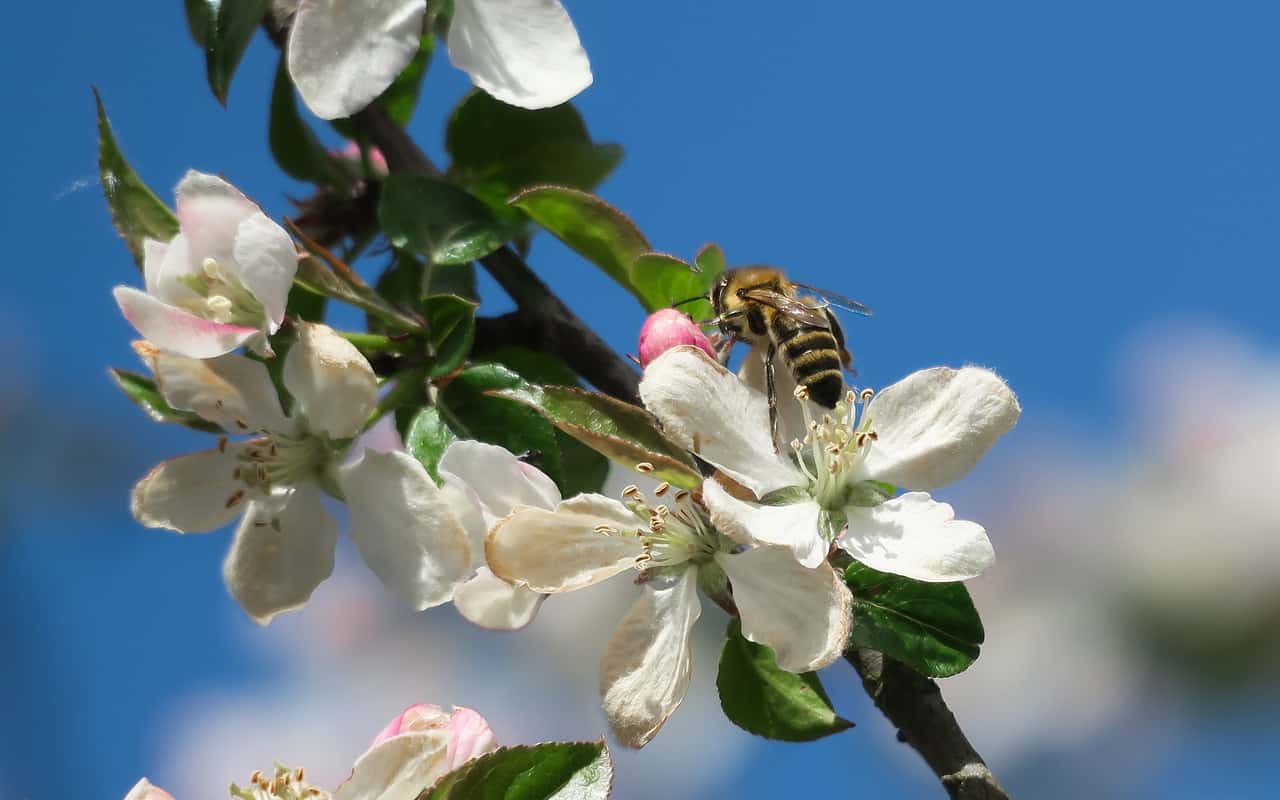To sustain wild bee populations, bee-attractive flowers need to be available during the entire growing season.
Bees are very useful for us and not just by making honey. They serve an even more important function as pollinators. Yet, like a myriad of other insects, they have fallen on hard times worldwide due to a range of stressors from climate change to habitat loss to pesticide use.
Scientists have been suggesting a variety of measures that can help embattled bees bounce back. One proposal recommends greening empty lots in cities to serve as refugees for bees and other insects. Another suggests cultivating a diversity of flowering plants for the benefits of pollinators like bees.
Now researchers in Germany propose yet another strategem: growing hedges and perennial flower strips in intensely farmed orchards in order to help wild bees living in the area.
“For enhancing wild bees in intensive agricultural landscapes we should provide a network of perennial flower strips and some well-maintained hedges to create a continuous flower offer over the entire growing season,” explains Vivien von Königslöw, a scientist at the University of Freiburg who was the lead author of a study on the findings.
The scientist and her team, who conducted their research from 2018 to 2020 in 18 apple orchards in Germany’s apple-growing Lake Constance region, found that the flowering times of hedgerows and perennial flower strips complement each other, thereby boosting the diversity and abundance of wild bees in the area.
As a result, if farmers plant a network of perennial flower strips and lower-rich hedges, they can go a long way towards supporting wild bees while benefiting from their role as effecitive pollinators, the scientists say.
Wild bees observed for the study visited flowering hedges in the orchards earlier in the season between April and June when they switched to perennial flower strips from June to August. This is why a mixture of perennial flower such as viper’s bugloss and mallow is preferable to annual mixtures, according to the researchers.
“Our results suggest preferential establishment of perennial flower strips rather than annual flower strips because perennial flower strips flower much earlier in the second year of establishment than in the year of sowing and attract different bee communities over the years. Thus, they are more suitable to enhance bee diversity,” Von Königslöw says.
Flower strips greatly benefited wild bees by being in bloom during periods when there were few other flowers around. Hedges, on the other hand, widely overlapped in their flowering with apple trees and ground vegetation in the spring in the orchards.
“In intensive agriculture landscapes, wild bees are rare because of a low availability of flowers as nectar and pollen sources. This is an issue for farmers as crop systems like apples are dependent on pollination,” the scientists explain in a statement.
“To sustain wild bee populations, bee-attractive flowers need to be available during the entire growing season, but in mass-flowering crop monocultures like fruit-trees, flowers are usually only in bloom for a short time,” they stress.
This story first appeared on Sustainability Times
© 2022 Sustainability Times.
This article is licensed under a Creative Commons Attribution-ShareAlike 4.0 SA International License.












